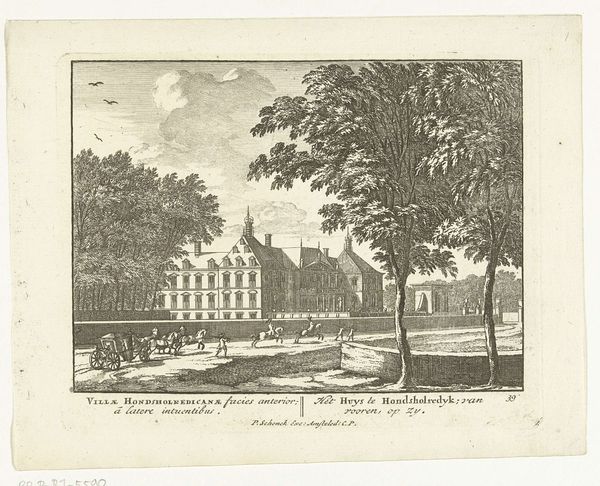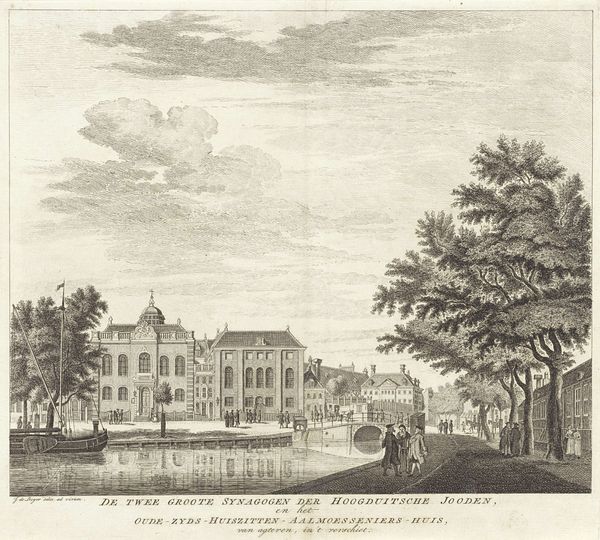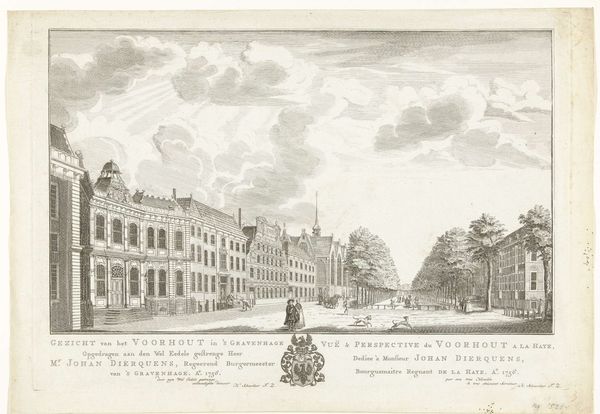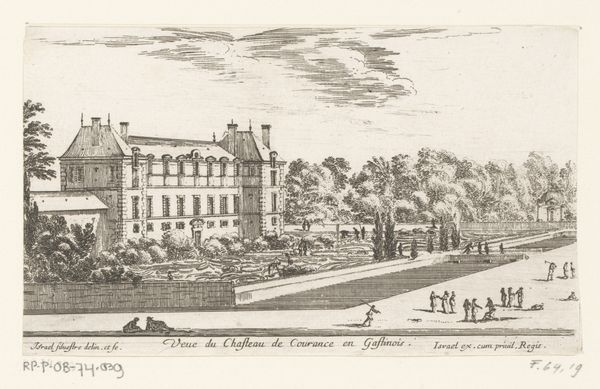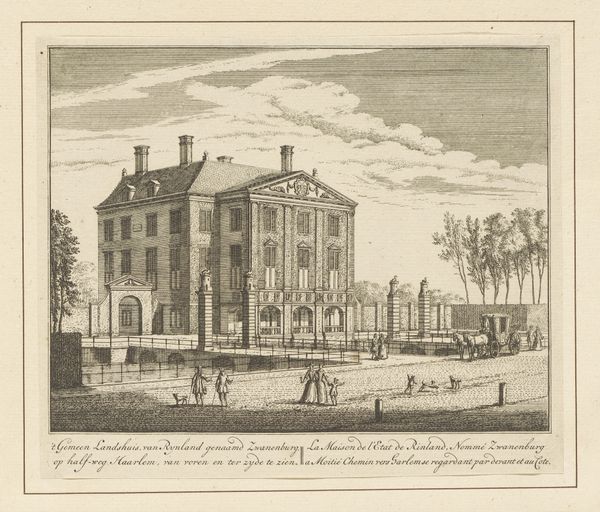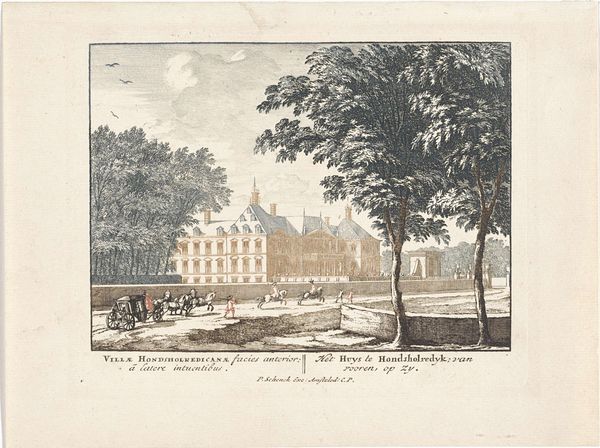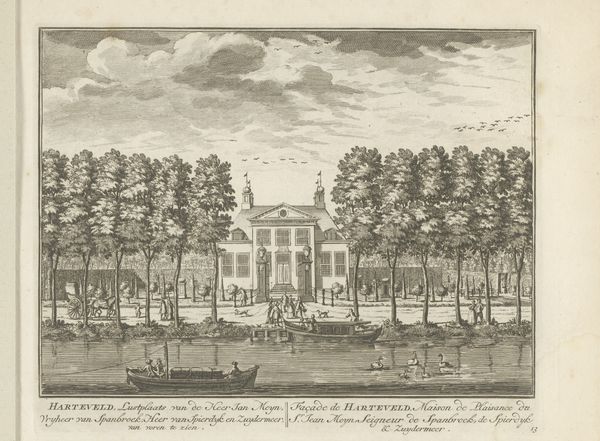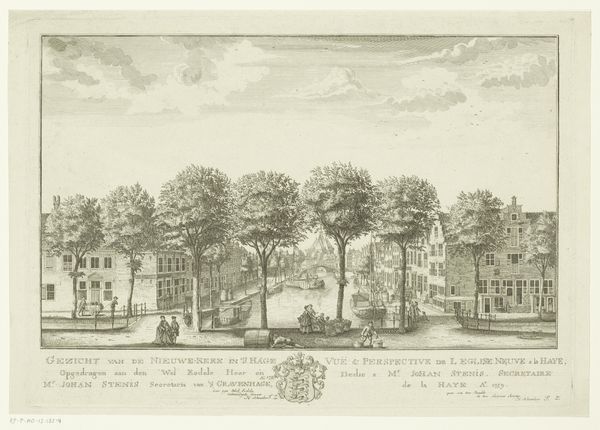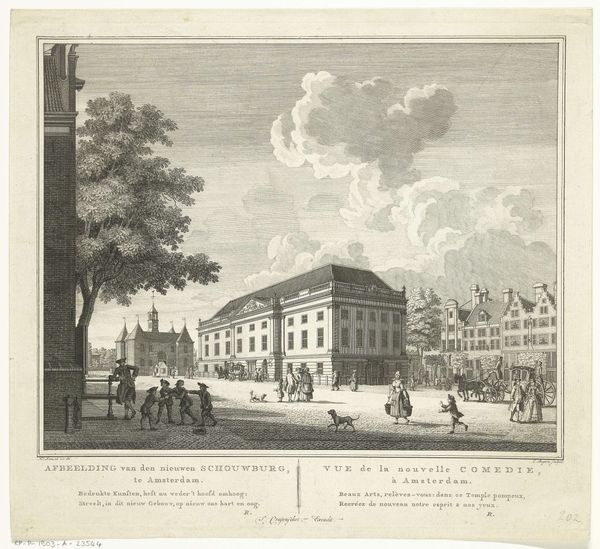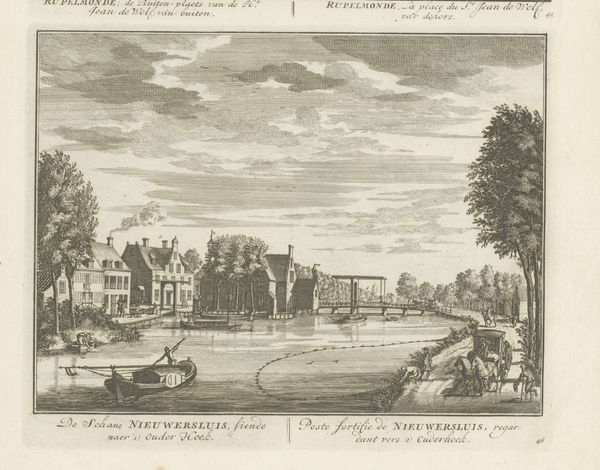
print, engraving
#
baroque
# print
#
landscape
#
cityscape
#
engraving
Dimensions: height 132 mm, width 170 mm
Copyright: Rijks Museum: Open Domain
Editor: Here we have Pieter Schenk’s engraving, "View of the Pond and the Court in The Hague," dating roughly between 1695 and 1705. The detail is remarkable; it almost feels like a photograph from that era. What strikes you most about this cityscape? Curator: It’s a carefully constructed image designed for public consumption. Prints like these circulated widely, shaping perceptions of the Dutch Republic's power and sophistication. Notice how the artist positions the viewer – almost like a respectful outsider looking in on the political heart of the nation. Do you see the figures promenading along the Vyverberg? Editor: Yes, they appear to be members of the elite class. The attire seems very formal, perhaps indicative of a society focused on image and hierarchy? Curator: Exactly. The artist strategically includes these figures. Prints functioned as propaganda, projecting an image of an orderly and prosperous society. Schenk doesn’t just depict a place; he reinforces the status and legitimacy of the governing class to a broader audience. The act of printing and distributing such imagery should also be taken into account, a certain politics lies within. What else do you see at play here? Editor: The very deliberate rendering of the architecture. The buildings have a kind of austere grandeur. It evokes stability and established power. Curator: Indeed. And consider where this print might have been displayed – perhaps in the homes of wealthy merchants or even in public spaces – further cementing these visual associations between the elite and the health of the state. Editor: So it is less about the individual buildings and more about what they represent in a social and historical context? I had not considered how widely distributed prints could play such a large role. Curator: Precisely. It serves as a reminder that images are always produced, circulated, and consumed within a specific set of power dynamics. This print offers insight into the early formation of national identity.
Comments
No comments
Be the first to comment and join the conversation on the ultimate creative platform.
